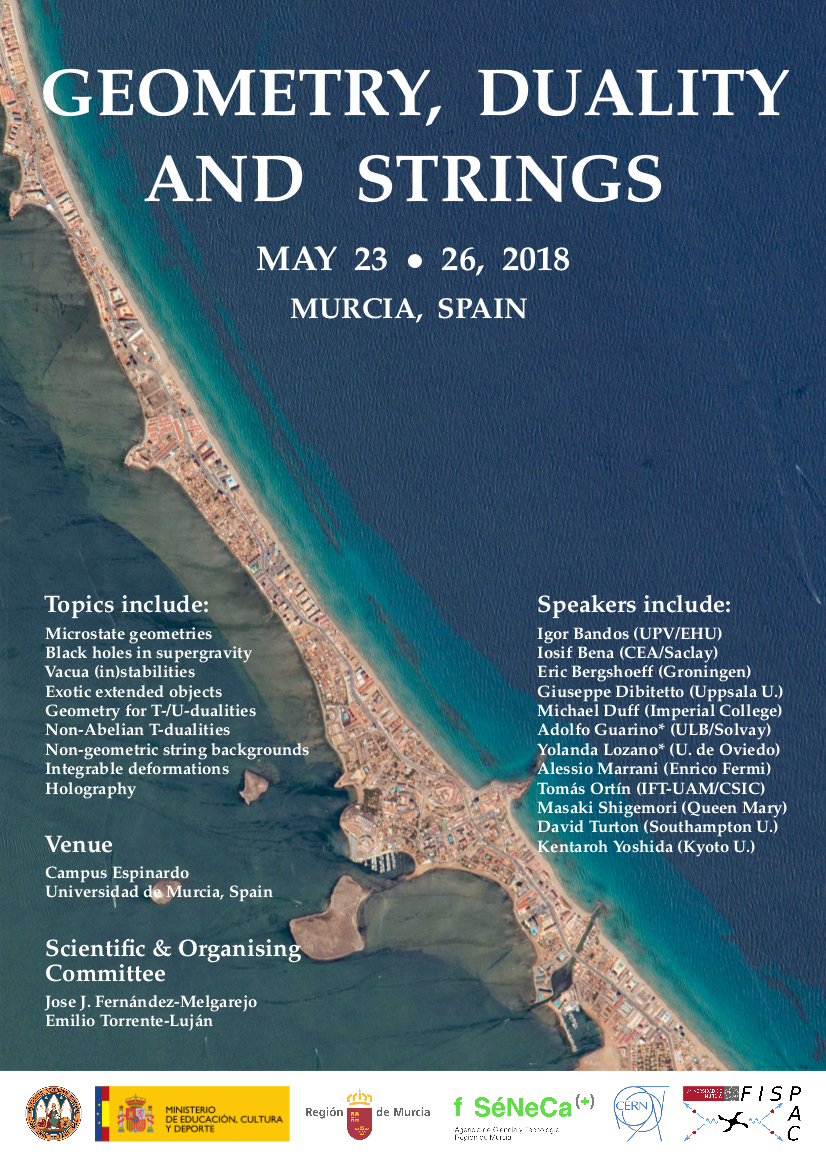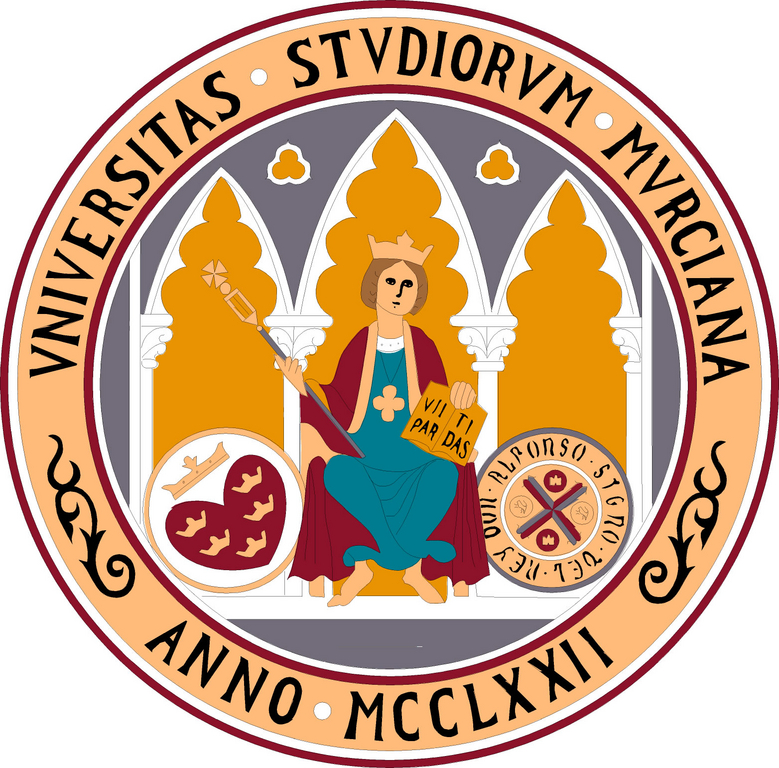- Compact style
- Indico style
- Indico style - inline minutes
- Indico style - numbered
- Indico style - numbered + minutes
- Indico Weeks View
Geometry, Duality and Strings 2018
→
Europe/Madrid
Universidad de Murcia, Campus de Espinardo (Murcia, Spain)
Universidad de Murcia, Campus de Espinardo
Murcia, Spain
Departamento de Fisica
Campus de Espinardo
E-30100 Murcia
Spain
,
Description
 Welcome. The workshop aims at bringing together experts in string and SUGRA theory, focusing on general recent developments. The first edition of this Conference took place in Kyoto (2017).
Welcome. The workshop aims at bringing together experts in string and SUGRA theory, focusing on general recent developments. The first edition of this Conference took place in Kyoto (2017).
Topics include:
- Microstate geometries
- Black holes in supergravity
- Vacua (in)stabilities
- Exotic extended objects
- Geometry for T- and U-dualities
- Non-Abelian T-dualities
- Non-geometric string backgrounds
- Integrable deformations
- Holography
Speakers include:
- Igor Bandos
- Iosif Bena
- Eric Bergshoeff
- Leron Borsten
- Giuseppe Dibitetto
- Michael Duff
- Adolfo Guarino
- Alessio Marrani
- Tomás Ortín
- Carlos Shahbazi
- David Turton
- Kentaroh Yoshida
(*) to be confirmed
Organising & Scientific Committee:
- Jose J. Fernández-Melgarejo (Yukawa Institute for Theoretical Physics/Univ. de Murcia)
- Emilio Torrente-Luján (Univ. de Murcia/CERN)
Technical Organisation Committee:
- Álvaro García Navarro (U. Murcia)




Organisation
Participants
Adolfo Guarino
Alejandro Ruipérez
Alessio Marrani
Alvaro Garcia-Navarro
Annamaria Sinkovics
Arpan Bhattacharyya
Ashis Saha
Carlos Shahbazi
David Turton
Emilio Torrente Lujan
Eoin Ó Colgáin
Eric Bergshoeff
Giuseppe Dibitetto
Iosif Bena
Javier Molina-Vilaplana
Jesús Montero
Jose J. Fernandez-Melgarejo
Juan Miguel Nieto
Junichi Sakamoto
Kentaroh Yoshida
Lars Kreutzer
Leron Borsten
Mario Trigiante
Michael Duff
Michele Zoccali
Oscar Lasso
Pablo Antonio Cano
Pedro F. Ramírez
Pierre Heidmann
Sergio Hortner
Silvia Nagy
Tomas Ortin Miguel
Yuho Sakatani
